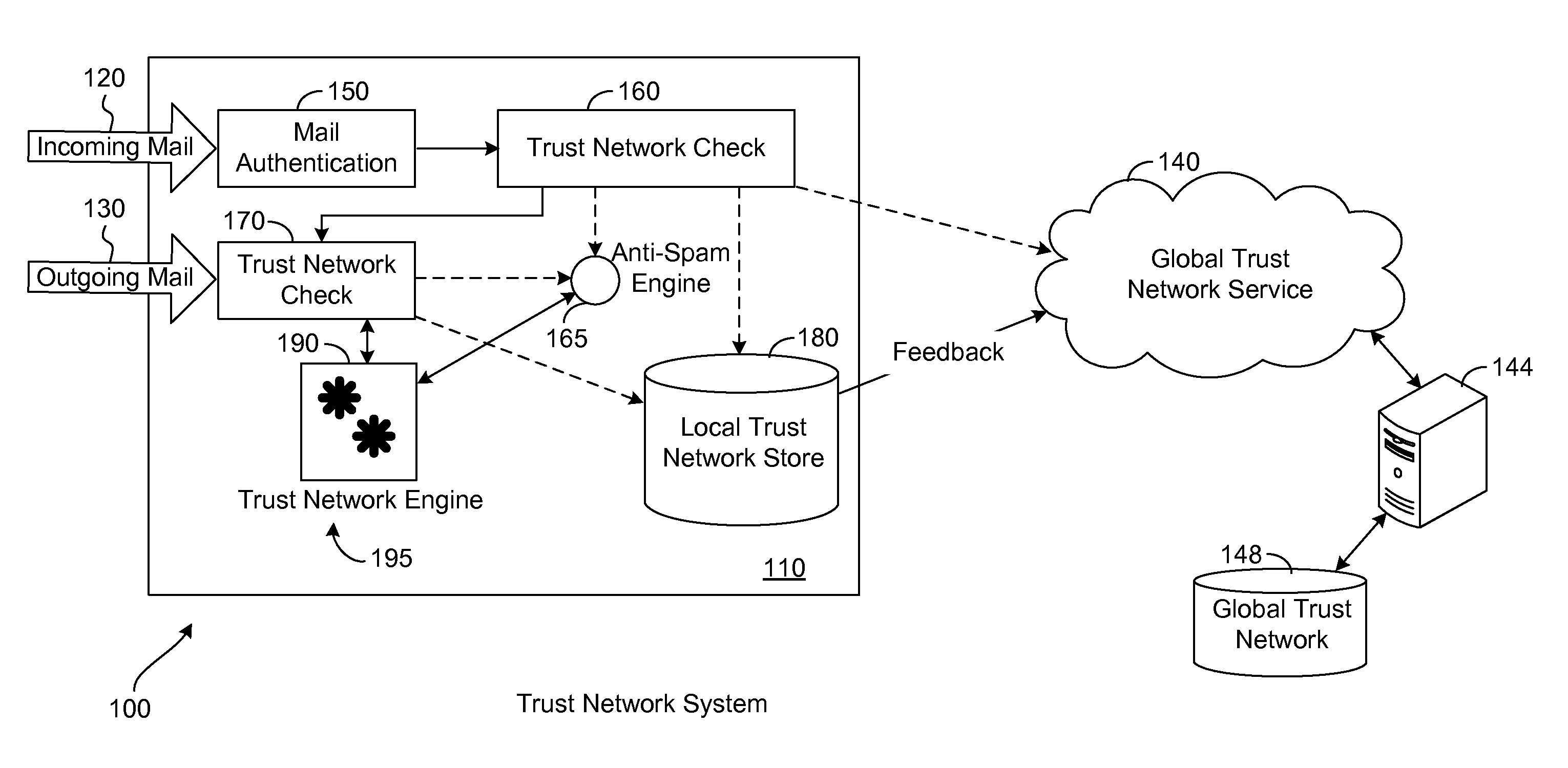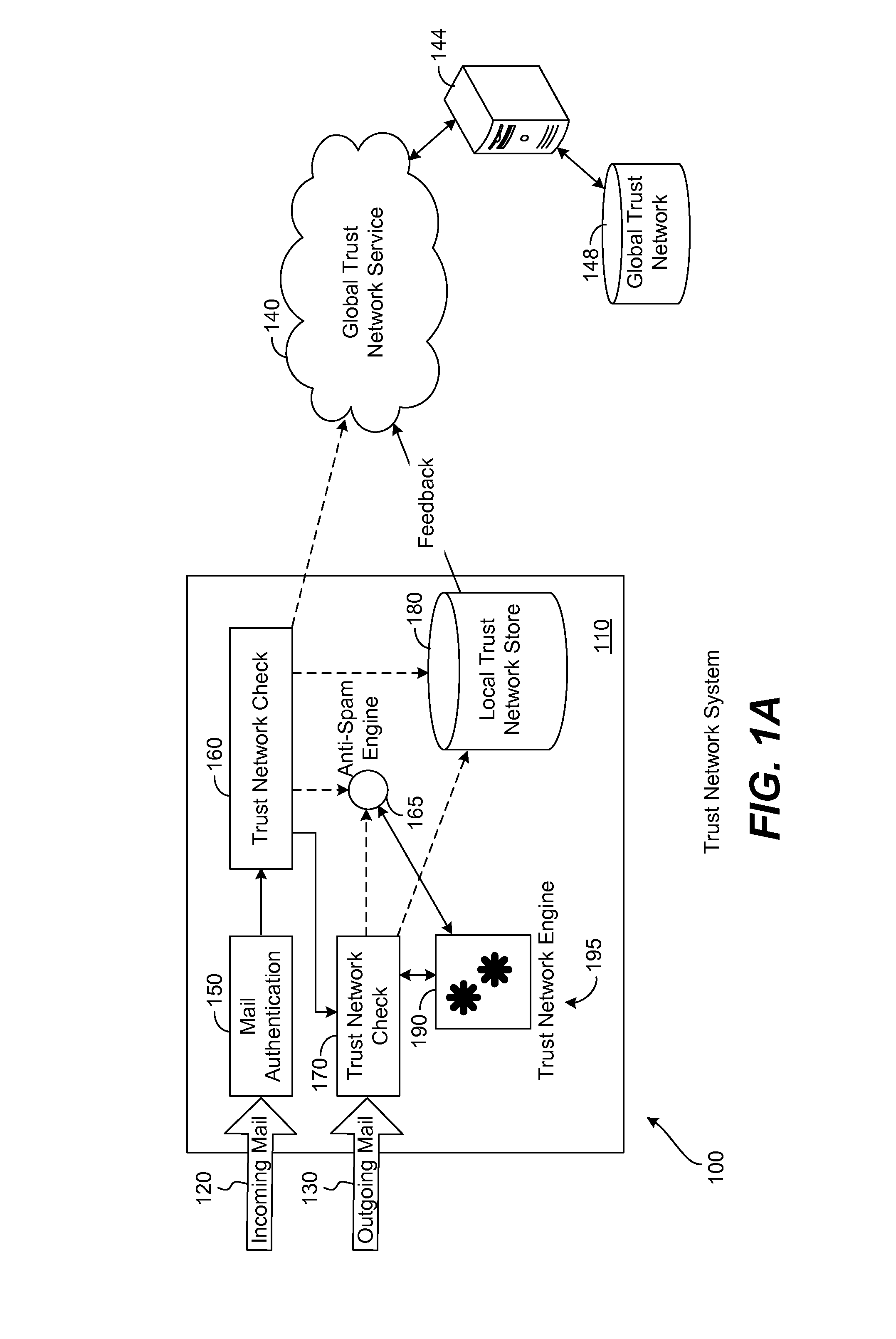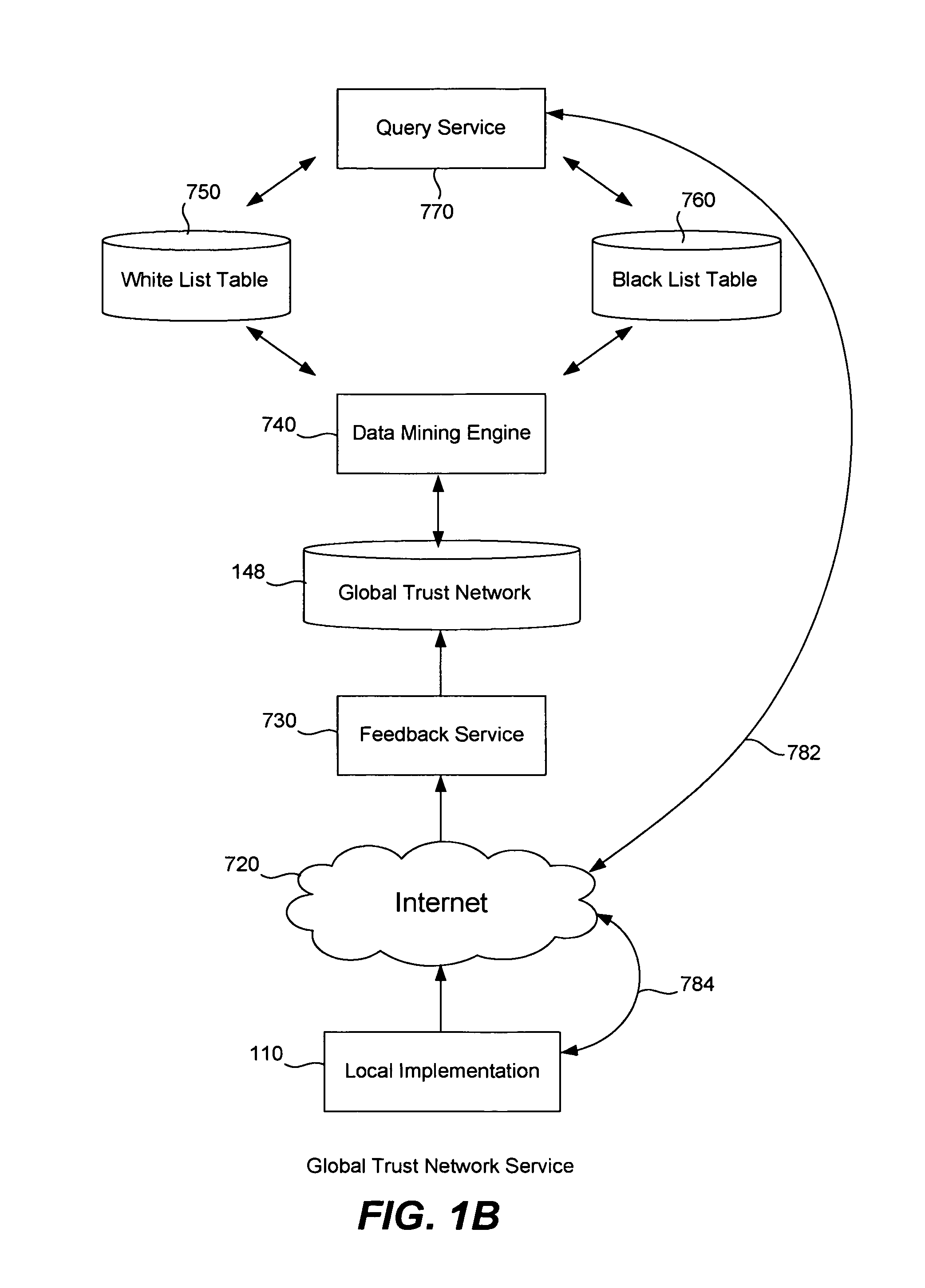Trust network to reduce e-mail spam
a trust network and e-mail technology, applied in the field of identifying electronic mail spam, can solve the problems of increasing the detection rate, and achieve the effects of reducing false positives, reducing spam, and reducing spam
- Summary
- Abstract
- Description
- Claims
- Application Information
AI Technical Summary
Benefits of technology
Problems solved by technology
Method used
Image
Examples
Embodiment Construction
[0026]Normally, an e-mail message sender only sends messages, forwards messages or replies to messages to his friends. Thus, if a sender sends or replies to recipients, it can be said that the recipients are trusted by the sender. Further, in an enterprise environment it can be determined that outgoing e-mail messages are always authenticated as coming from legitimate senders. Upon collection of all of this trust information, a global trust network for senders and recipient can be built. Any suitable e-mail MTA or e-mail program (or any anti-spam product) operating on a user computer or within an enterprise provides feedback to the in-the-cloud global trust network. Then, using that trust network it can be judged if A trusts B; if so, then B is permitted to send e-mail messages to A. In this sense, the trust network functions as a white list technology.
[0027]Terminology may be defined as follows. If A sends mail to B, we say that A trusts B. likewise, if B sends mail to A, we say th...
PUM
 Login to View More
Login to View More Abstract
Description
Claims
Application Information
 Login to View More
Login to View More - R&D
- Intellectual Property
- Life Sciences
- Materials
- Tech Scout
- Unparalleled Data Quality
- Higher Quality Content
- 60% Fewer Hallucinations
Browse by: Latest US Patents, China's latest patents, Technical Efficacy Thesaurus, Application Domain, Technology Topic, Popular Technical Reports.
© 2025 PatSnap. All rights reserved.Legal|Privacy policy|Modern Slavery Act Transparency Statement|Sitemap|About US| Contact US: help@patsnap.com



